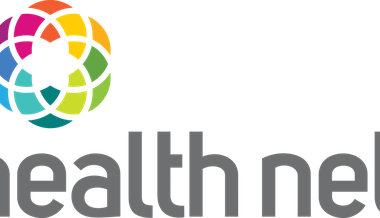Health care costs continue to rise every year, making it more important than ever to understand your private health insurance options. This comprehensive guide will help educate you on the various types of private health plans available, what they cover, and factors to consider when choosing coverage. By the end, you will be equipped to make an informed decision that best suits your needs and budget.
Key Types of Private Health Insurance Plans
There are several main types of private health insurance plans for individuals, families, and employees. Let’s take a deeper look at each:
PPO Plans
Preferred Provider Organization (PPO) plans are one of the most popular choices. With a PPO, you can visit any doctor or hospital in or out of the insurer’s network. However, you’ll pay less out-of-pocket if you use network providers. PPOs also require you to meet a deductible for the year before coverage kicks in for most services. Co-pays are typically required for doctor visits and prescription drugs.
HMO Plans
Health Maintenance Organization (HMO) plans are more restrictive than PPOs. You must choose a primary care doctor (PCP) in the plan’s network who serves as a gatekeeper for specialist referrals and other services. Co-pays are common. No coverage is provided for out-of-network care except emergencies. HMOs tend to be the most affordable option but limit your provider choice.
HDHP/HSA Plans
High-Deductible Health Plans (HDHPs) are paired with Health Savings Accounts (HSAs) that allow you to save pre-tax income to pay for qualified medical expenses now or in retirement. HDHPs have higher annual deductibles than traditional plans but lower premiums. The tax benefits of an HSA can offset the higher deductible costs. Preventive care is covered before meeting the deductible.
Short-Term Plans
Short-term, limited duration health insurance plans offer a cheaper alternative to ACA-compliant plans. Coverage lasts up to 364 days and can be renewed but does not cover pre-existing conditions. Benefits are limited and vary between plans. However, premiums are generally much lower than other options.
Key Factors to Consider
With so many options, choosing the best private health plan can feel overwhelming. There are several important factors to weigh as you compare plans:
Network Size & Coverage Area
Consider the number of in-network doctors, hospitals, and facilities in your area. A limited network may not give you access to your preferred providers. Make sure your preferred doctors are in-network before enrolling.
Deductibles & Out-of-Pocket Maximums
Higher deductibles generally mean lower premiums but more initial costs. Calculate what your maximum potential total annual costs could be based on your expected medical needs.
Coverage Details
Closely review summary of benefits for services covered like prescription drugs, lab work, primary care & specialty visits, procedures, etc. Compare co-pays, coinsurance amounts, and coverage thresholds.
Plan Quality & Reputation
Check reviews and ratings of insurers. Consider their financial stability, customer satisfaction scores, and how easy or difficult claims processing tends to be reported.
Provider Recommendations
Ask your doctors which plans they accept. Following their guidance helps ensure continuity of care with providers familiar with your medical history and needs.
The next section will explore these factors in more detail to help you analyze private plan options systematically. Thorough research is key to choosing coverage suited for your specific health situation and budget.
Deep Dive: Comparing Plan Details
To select the best private health plan, it’s important to do an apples-to-apples comparison of key details for the options under consideration. Let’s breakdown some areas to scrutinize:
Provider Network
For PPOs and HMOs, identify the total number of primary care physicians, specialists, hospitals, labs, etc. in your location. Also note if favorite providers participate. Network adequacy is crucial for ongoing care access.
Annual Deductible
Note individual/family annual deductible amounts. Evaluate if you could afford to pay these costs from savings before coverage starts. Deductibles reset each January 1st.
Coinsurance & Maximum Out-of-Pocket
After the deductible is met, plans share costs through coinsurance, usually 80-20% ratios. Calculate total maximum out-of-pocket costs including deductible and coinsurance to budget for the worst healthcare year.
Prescription Drug Coverage
Review tiers, formulary choices, co-pays or coinsurance for generic, preferred brand name, non-preferred drugs. Calculate costs for medications you regularly take.
Primary Care Visits
Note any office visit co-pays and frequency allowed or visit limits per year. Assess costs of routine preventive care checkups.
Specialty Care & Imaging
Verify referral & pre-authorization processes for specialists and scans. Costs vary for in vs. out-of-network providers even with a referral.
Hospitalization
Confirm inpatient admission and daily room rates along with any surgical co-pay or coinsurance costs per procedure. A deductible may apply pre or post-surgery.
Non-Covered Services
Pay attention to exclusions like dental, vision, fertility, or cosmetic procedures. Consider supplementing coverage if any are important to you.
Armed with these insights side-by-side on paper, it becomes simpler to determine overall value and out-of-pocket affordability for each private plan under review. The top choice suits your budgetary and medical needs the best.
Deciding Factors Beyond Plan Details
When the options appear fairly similar on coverage and costs, other considerations may tip the scales:
Doctor Recommendations
Your physician’s guidance on which plans they take and have good experiences with can influence your choice. They know your history and access requirements.
Insurer Quality Ratings
Check scores from the National Committee for Quality Assurance (NCQA) and reviews on claims processing, customer service, and plan administration quality.
Additional Benefit Options
Insurers may offer extras like telehealth visits, health coaching, fitness program discounts or second medical opinions your providers can help leverage beyond basic coverage.
Pharmacy Network Flexibility
Especially for those with rarer conditions needing specialty drugs, compare the choice of mail order, local retail pharmacies, and on-formulary drugs available at lower co-pays.
Out-of-Area Coverage
When considering travel for work or family, note differences in emergency or urgent care coverage while temporarily outside your state of residence or the plan’s service region.
Renewal Rates & Timing
Inquire on average premium increases over the past few years and the notification period for next year’s rates if already available to budget accordingly.
With full clarity of financial responsibility, coverage specifics, reputation, supplemental benefits and additional services by digging into all angles – you can determine the private health plan exceedingly matching your unique situation.
Resources for Comparing & Enrolling
Now that you know what to analyze in private insurance options, where can you conduct research and sign up? Here are some top places to get started:
Healthcare.gov
Whether you qualify for subsidies or not, browsing plans on the ACA Marketplace provides standardized rate and benefit comparison tools. Enroll during Open Enrollment periods.
Broker Websites
Independent agents list carriers they represent and can run customized quotes factoring your profile. Consultations help interpret differences to pick the best fit plan.
Insurer Websites
Browse directly through specific companies to learn about their plans, provider networks and forms to calculate estimated costs. Some enroll year-round.
State Government Sites
Resources like coveredca.com in California or mnsure.org in Minnesota run state-run Marketplaces or exchanges with similar shopping functions to the federal platform.
Employer Benefits Office
Check what your company provides and contributes if looking to enroll in workplace coverage as an employee or dependent. Special sign-ups may apply.
With the right research approach using available plan matching tools and guidance from brokers knowledgeable on your local market – you can make an informed selection of private insurance confidently.
Maintaining Coverage
Once enrolled in a private health plan, don’t forget ongoing responsibilities to maximize benefits and avoid penalties:
- Pay premiums on time to maintain active coverage status
- Update provider networks when carriers or doctors change participation
- Check for policy renewal each fall to verify rates and plan availability
- Report any qualifying life changes allowing special enrollment
- Appeal coverage denials promptly by following insurer procedures
- Utilize all preventive care fully covered as a smart cost-saving strategy
- Coordinate claims carefully between multiple plans if applicable
- Inquire about options during employer plan open enrollment each year
Staying informed and engaged helps you take full advantage of your private health insurance investment. With diligent research upfront, the right plan selected can provide strong financial protection for future healthcare needs.
In summary, carefully weighing your medical utilization patterns, budget, and needs against private plan details by leveraging the numerous resources available allows making an optimized choice. An informed decision leads to appropriate care access and cost savings.





